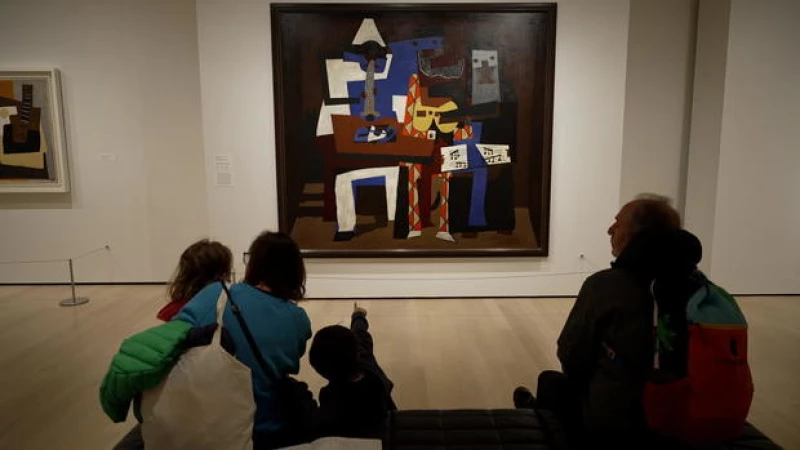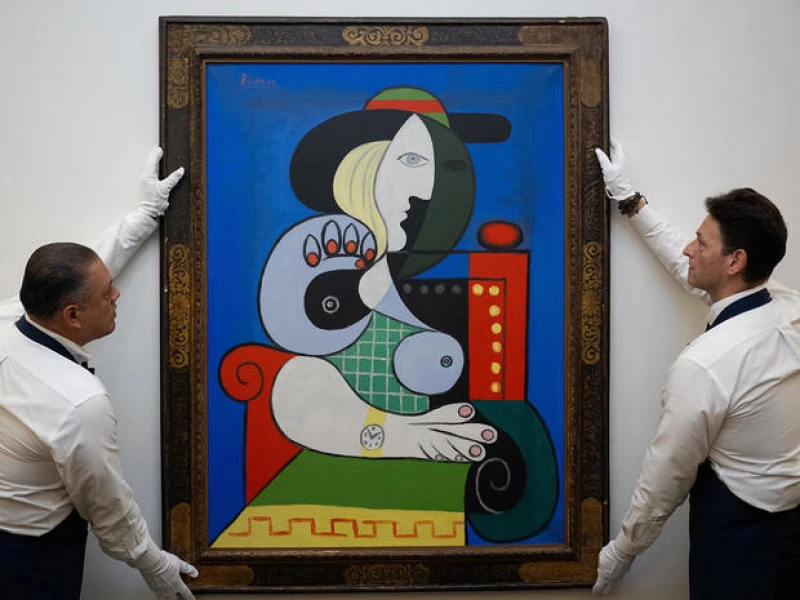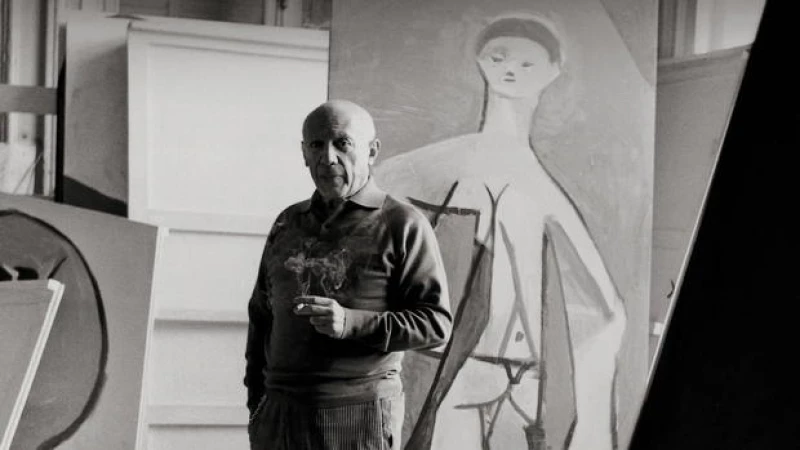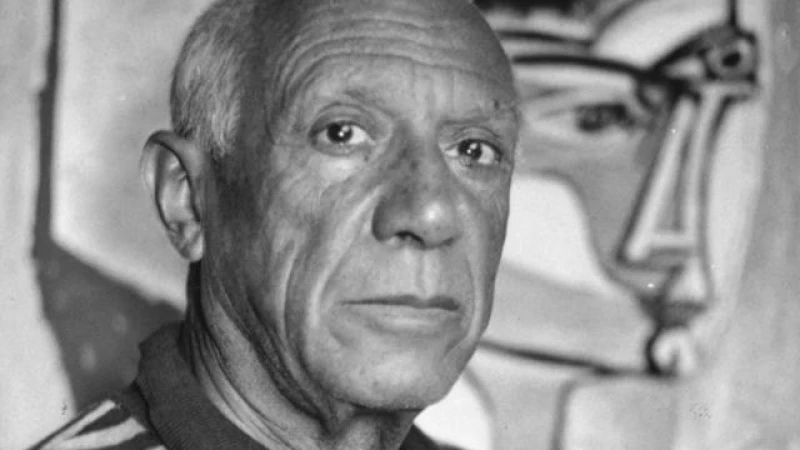Picasso's Legacy: A World of Exhibitions and Controversy
At the Gagosian Gallery in New York, an exhibition of Pablo Picasso's works opened last month – one of nearly 50 shows this year in museums and galleries around the world marking the 50th anniversary of the artist's death, from sculptures in Spain, to landscapes in Mississippi, even one exhibit at New York's Museum of Modern Art exploring works from just one summer.

And at Sotheby's last month, Picasso's "Femme à la Montre" ("Woman with a Watch") became the most expensive painting to be auctioned this year, selling for $139.4 million.

But in the #MeToo era, the master's reputation has also been the target of reappraisal. As the Brooklyn Museum put it: "It's Pablo-matic."
In her recent New York Times column, "Picasso: Love him or hate him?," art critic Deborah Solomon raised the question whether Picasso should be reevaluated. "Why shouldn't he be reevaluated?" she said. "We are living in a time when we no longer want to tolerate abusive behavior.
"I love the way he depicted women; I don't feel cruelty in the paintings, I don't feel sadism," Solomon said. "If we are going to look at his life, that's where all the problems come in. He obviously was a cad. He was a raging chauvinist."
Picasso abandoned his first wife, ballet dancer Olga Khokhlova. The lover he left her for, Marie-Thérèse Walter, later died by suicide. Another lover, Dora Maar, needed shock therapy after Picasso walked out on her.
Solomon said, "There's the famous photograph of him trailing Françoise Gilot on the beach, holding a parasol above her head. You would think he is the most helpful lover. I don't think it really captures what he put women through."
Gilot, an artist herself, became the only one of Picasso's many muses to leave him. Paloma Picasso, the artist's last surviving child, was four years old when Picasso and Gilot split. "She thought that in that relationship, they should be equal," Paloma said.
"He didn't like that?" Mason asked,
"Once she left, he didn't!" she laughed.
For the next decade Paloma and her brother, Claude, would spend about four months a year with their father. "What I always thought was fascinating is that every time we arrived from Paris with Claude, the house would look different," Paloma said. "Because he would have been maybe through a phase of doing ceramics. So, the house was filled with ceramics. You could hardly walk."
In 1964, just months before her mother's book, "Life with Picasso," was published, Paloma found herself cut off from her father by her stepmother, Jacqueline Roque. Paloma believes that Jacqueline felt threatened by her and her siblings. This sudden separation was extremely difficult for Paloma to handle.
Despite the rejection, Paloma would visit her father's gated house in the south of France a few times a year, unannounced. Each time, she would be met with the response, "Monsieur n'est pas la." However, Paloma kept going back because she couldn't bear the thought of not seeing her father.
During one encounter in the street, Paloma and her father had a great interaction, but Jacqueline kept pulling him away, saying they had to go. Paloma tends to blame the people around him, particularly her stepmother, for their limited time together.
When asked if she gives her father a break, Paloma admits that she does, laughing and saying, "I'm daddy's little girl, I suppose!"
Paloma's story sheds light on the complex dynamics within Pablo Picasso's personal life and the impact it had on his relationship with his children. Despite the challenges, Paloma's love for her father remains evident, as she continues to cherish the moments they were able to spend together.
This year, Paloma, a renowned jewelry designer, took over the administration that runs the artist's estate. Asked about the attempts to reappraise her father post-#MeToo, Paloma said, "Before they made him into a god, which is, of course, an exaggeration. And so now he's become this terrible monster, which is a huge exaggeration. Of course, he had some faults. But he was not nice to his men friends, either. Nobody cares about that!"
Artist Mickalene Thomas' own series of works, "Tête de Femmes," took inspiration from Picasso's female portraits.

When asked if her view of him has changed, Thomas replied, "No, he's still an a*****e."
"But has that affected your respect for him as an artist in any way?" asked Mason.
"It's complicated, and that's okay," she replied. "I mean, there are family members that are the same way. He was innovative, experimental. And he did it half the time in his underwear!"
But she does not think Picasso should be "cancelled."
"I wouldn't want my work to be cancelled," she said. "I think it's very complex, because right now we can separate the art from the artist, because he's not here. But would we hold him accountable if he was?"
Solomon said, "Art is larger than this moment. And this moment is causing a lot of dissent, much of it justified. But art is larger than that."
Understanding Picasso from Multiple Perspectives
She said we should look to cubism – which Picasso created – to understand the artist: "What made him a modern artist is that he took on the single point perspective that had prevailed in art for 500 years – he believed that we never see things just one way."
And she believes we should see Picasso the same way: "When we look at Picasso, he deserves to be seen from multiple perspectives. It's okay to have conflicting feelings about him. You can say, 'I love his work, but he was a bad boyfriend. And I'm glad I never met him!'"
For more info:
- Picasso Celebration 1973-2023
- "Picasso Sculptor: Matter and Body," at Guggenheim Museum Bilbao in Spain (through January 14, 2024) | Virtual tour
- "A Foreigner Called Picasso," at the Gagosian Gallery, New York City (through February 10, 2024)
- "Picasso in Fontainebleau," at the Museum of Modern Art, New York (through February 17, 2024)
- "Picasso Landscapes: Out of Bounds," at the Mississippi Museum of Art, Jackson, Miss. (through March 3, 2024)
- "Picasso: Love him or hate him?" by Deborah Solomon (The New York Times)
- Artist Mickalene Thomas
-
Credits:
- © 2023 Estate of Pablo Picasso/Artists Rights Society
- © RMN-Grand Palais/Art Resource, NY, photograph: René-Gabriel Ojéda
- Landscape Image © RMN-Grand Palais/Art Resource, NY: photo: Mathieu Rabeau
- Harlequin Photo: © Metropolitan Museum of Art/Licensed by Art Resource, New York
- Courtesy Metropolitan Museum of Art, New York, and Gagosian
Story produced by Julie Kracov and Sara Kugel. Editor: Carol Ross.
Related Articles:
- Interview with Artist Françoise Gilot, Revealing Life with and after Picasso ("Sunday Morning")
- Exploring Picasso's Relationship with His Mistress and Muse ("Sunday Morning")
- Discovering Picasso's Influence on American Artists ("Sunday Morning")







